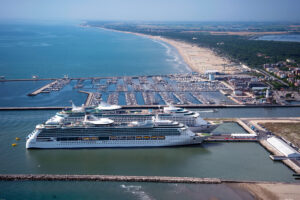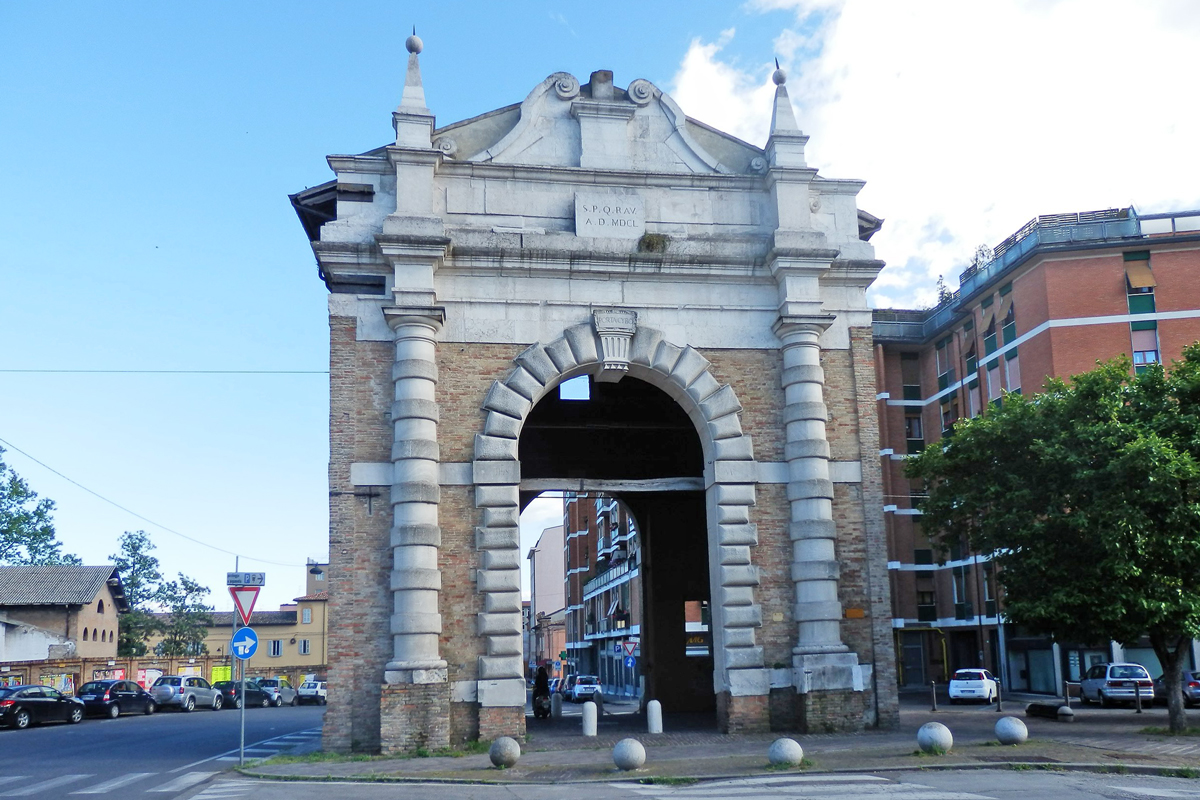PORTA SERRATA is located on the north side of the city walls, in the place where the central axis Via di Roma crosses with the street leading to Sant’Alberto.
What you see today is the result of a series of renovation works carried out during the centuries, probably starting from the end of the 15th century.
Before, access to this part of the city was provided by another gateway in the city wall, called Porta Anastasia. From here, it was possible to reach one of the most important roads of the time, the current Via di Roma.
After the Da Polenta family was sent away by the Venetians, the gate was closed – here is the origin of the name Serrata (lit. fastened).
When Pope Julius II visited Ravenna in 1511, he ordered the gate to be reopened and named it Porta Giulia in his honour. This event created great joy and satisfaction among the population, although it was not destined to last.
In 1582, Cardinal Legate Ferreri had the structure demolished and then rebuilt a little further on (1583), so that it could match the new course of Via di Roma.
On that occasion, he had it decorated with marbles and materials coming from the destruction of the Roman Porta Aurea, which he himself had dismantled (see Porta Adriana).
In 1621, during a town festival, the vault collapsed, along with the wooden bridge over the Montone River. The gate was thus restored by Cardinal Legate Alderano Cybo in 1650, who called it Porta Cybo.
During World War II, all the buildings around it were demolished, isolating the gate and making it appear almost out of context.
Built with bricks and pieces of Istrian stone and marble, the gate features an arch outlined by an ashlar motif and a keystone recalling Greek triglyphs. On the sides, two half-columns rise towards a thick trabeation with the coat of arms of Ravenna and a the inscription Renovata Antiquitas (lit. restored antiquity).








